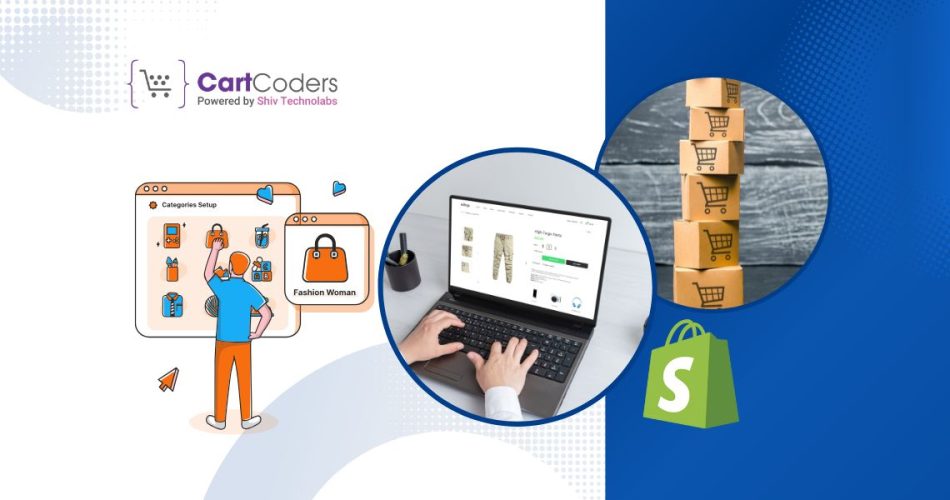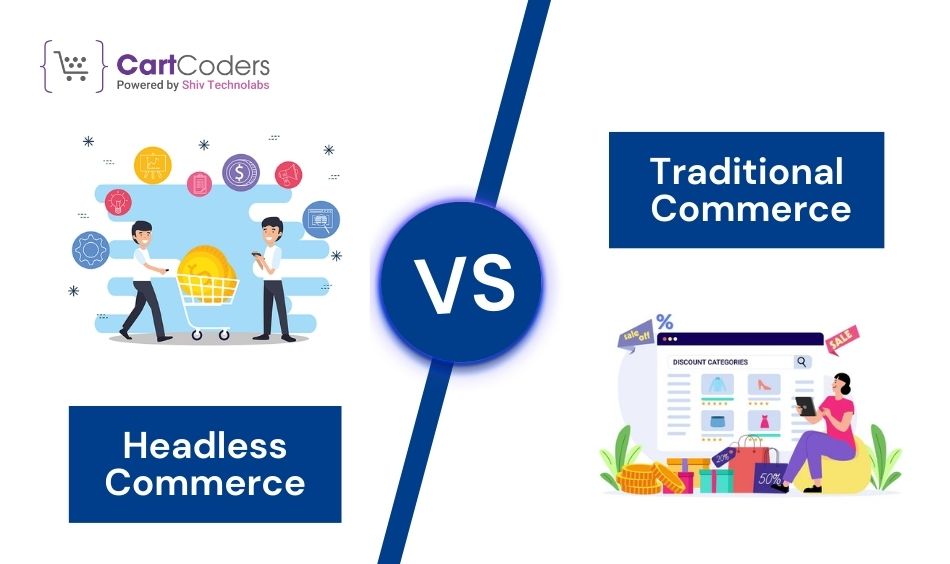Custom Engagement Solutions
Unlock tailored solutions with a free, no-obligation strategy session.
Expert Developers & Engineers on Demand
Scale Your Team with Skilled IT Professionals
Expert Guidance for Digital Transformation

Nowadays, many people go for headless commerce against traditional commerce when evaluating the appropriate architecture to build your omnichannel business. It’s one versus the other.
But the truth is that alternative combinations exist. Instead of looking for an either-or decision, it’s about selecting the system, platform and tools to deliver customer commerce experiences globally. It often requires marrying both headless and traditional commerce.
Let’s look into the difference between headless and traditional commerce and how to choose the exemplary site architecture for your brand.

Shopify headless commerce development means disconnecting the front-end presentation layer from the back-end e-commerce functionality.
While maintaining vital eCommerce operations, the disconnection allows businesses to create customized user experiences.
Customers deliver unique and engaging interfaces over various platforms, such as websites and mobile apps, by exploiting Shopify’s powerful back-end capabilities.
Traditional eCommerce combines the front-end user interface with the back-end infrastructure on an all-in-one platform. In this structure, handling design, front-end code, and back-end code are tightly integrated.
The front and back-end code team up to fetch data from the database and present the page when a shopper visits the product page.
It simplifies customization without altering the core code, whereas the downside is a limitation to the platform’s templates and capabilities.
Also Read:- The Future of eCommerce – Headless Commerce & How to Find the Right Developer?

Several key factors influence decision-making while differentiating between headless and traditional eCommerce. Let’s go through some of the differences to choose the correct option according to the needs and capabilities of the business.
Traditional commerce has less flexibility, as one change can impact the entire system.
On the other hand, headless commerce has higher flexibility as its modular components are independent.
The development process becomes hectic in traditional commerce as UI or any data, the entire database, etc., needs to be changed.
The development process becomes faster and easier in headless commerce, as UI or data can be easily changed without affecting other components.
Due to the complexity of the system and the single code base, traditional commerce’s performance could be improved.
Headless commerce provides higher agility as developers can quickly adapt to new tech and the latest trends per market demand.
Traditional eCommerce allows retailers to deliver consistent shopping experiences only through limited channels.
Meanwhile, headless commerce allows retailers to deliver a consistent shopping experience across various points, including apps, sites, mobile devices, social media platforms, etc.
Traditional commerce provides less agility due to the components that depend on each other.
On the other hand, headless commerce provides higher agility due to the developers’ ability to quickly adapt to new tech and the latest trends as per market demands.
Traditional Commerce limits control as the tech and architecture depend on various factors.
Meanwhile, headless commerce gives complete control over choosing the ideal stack and architecture.
Implementing and testing new features in traditional commerce is time-consuming. Whereas the entire development process in headless commerce is independent and provides speed to the market.
There are various limitations in traditional commerce, so it fails to provide a better experience.
On the other hand, there is no such limitation in headless commerce; it is future-ready and provides a better experience.
Also Read:- The Rise of Headless Commerce: Why Choose Shopify Headless Commerce Development
Because of its potential benefits, headless commerce is becoming more and more popular. Headless architecture promises a new level of creative freedom for brand marketers. Let’s jump onto the merits and demerits of headless commerce.
Some of the merits of headless commerce are:
Businesses looking to go for headless should also consider these demerits as well. They are:
A traditional, monolithic architecture has many benefits but drawbacks as well. Let’s look into the merits and demerits of conventional commerce.
Some of the benefits of traditional commerce are:
Some of the drawbacks of traditional commerce are:
Traditional and headless commerce offer distinct technology approaches, each with advantages and disadvantages. If a business adapts innovative solutions like Shopify headless commerce development, it can provide businesses with a significant advantage. It makes a compelling choice for companies looking to grow and adapt to changing market demands through headless architecture’s flexibility, scalability, and enhanced customer experiences.
Smaller brands often favor traditional platforms for a quick online presence, while more prominent brands choose headless solutions for advanced flexibility and omnichannel personalization.
CartCoders is a leading Shopify development company, not just a developer, specializing in headless commerce solutions. They help businesses navigate complex implementations and position themselves for long-term success.
Projects delivered in 15+ industries.
95% retention rate, building lasting partnerships.
Serving clients across 25+ countries.
60+ pros | 10+ years of experience.